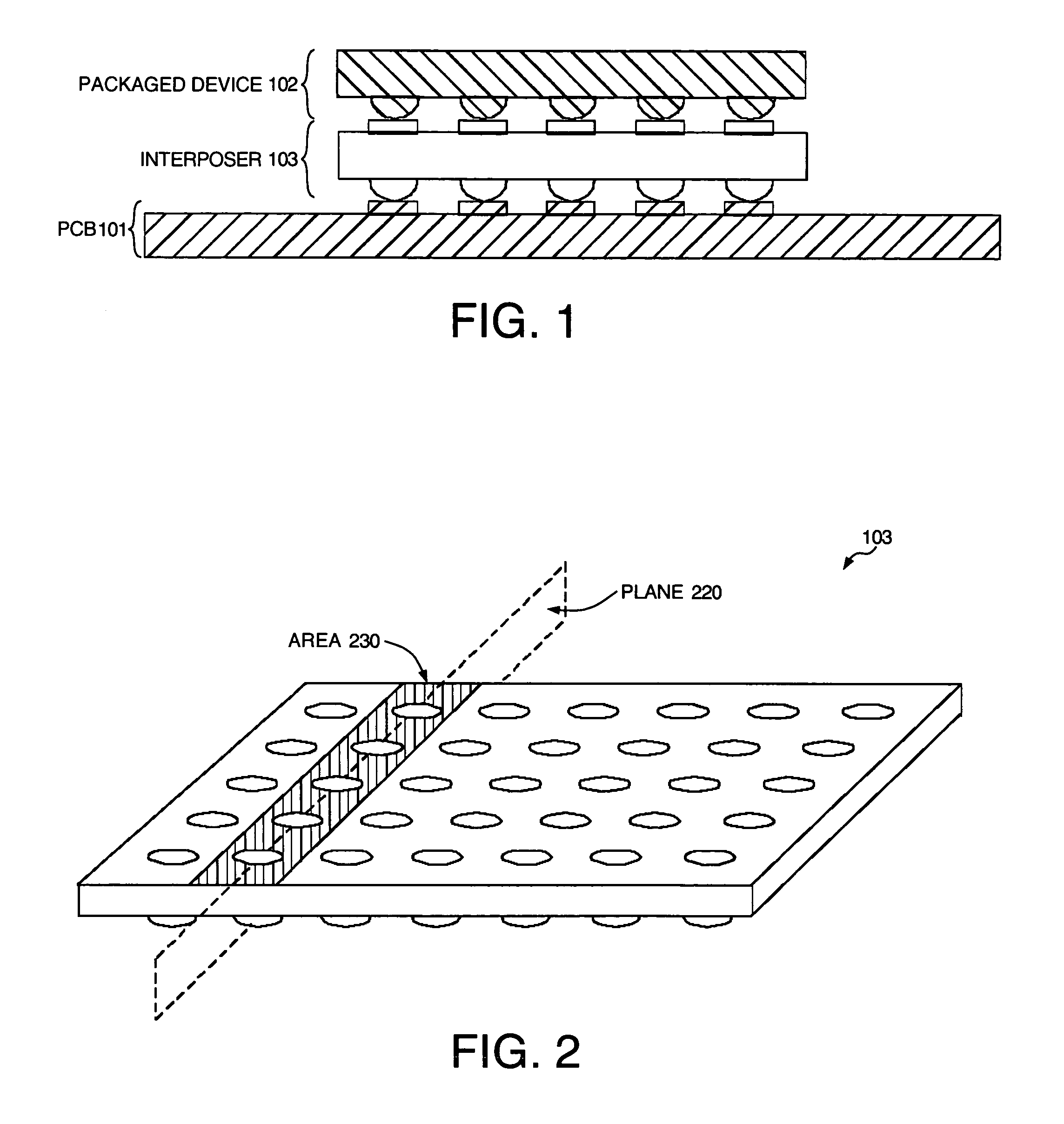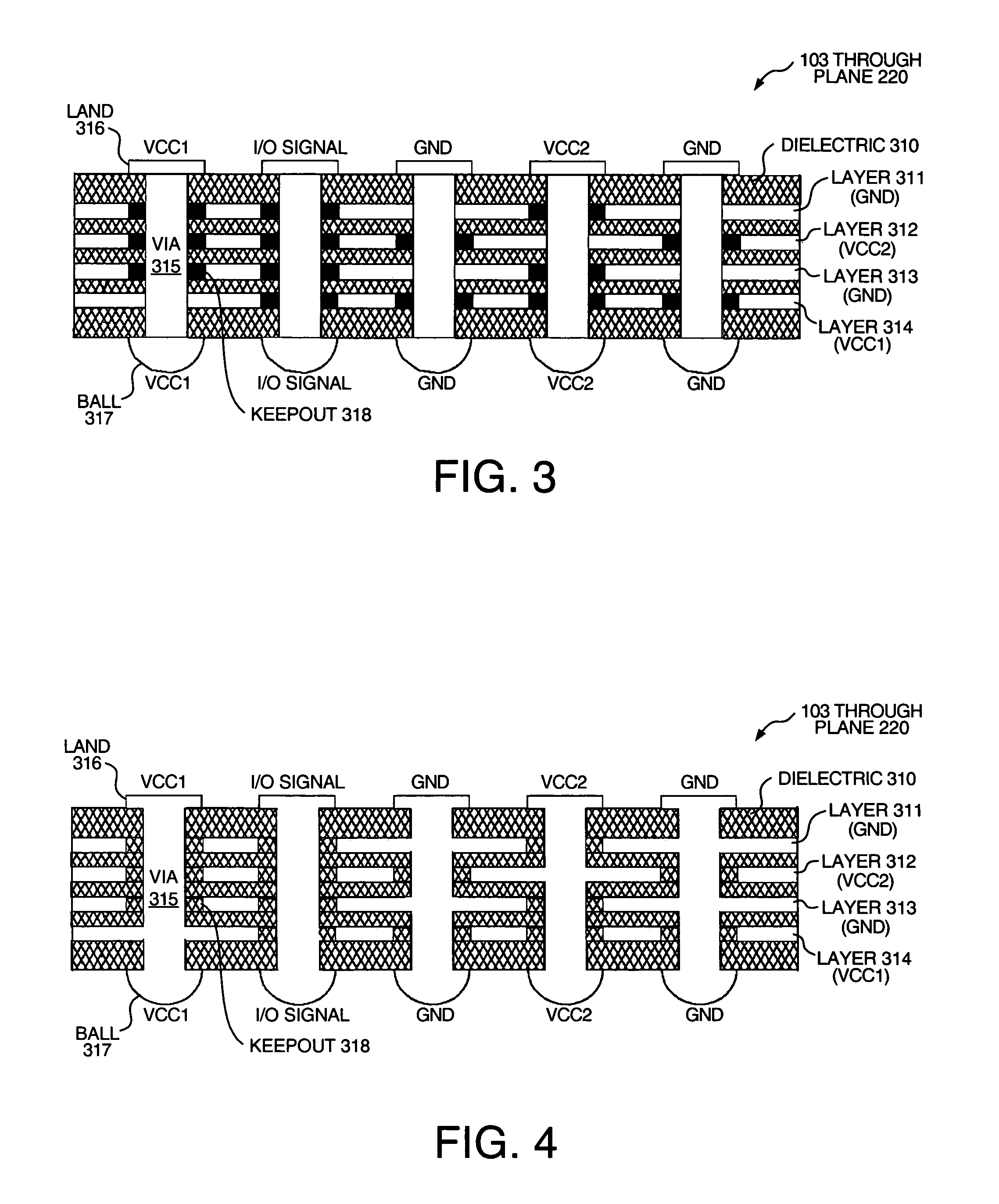Interposer for impedance matching
- Summary
- Abstract
- Description
- Claims
- Application Information
AI Technical Summary
Benefits of technology
Problems solved by technology
Method used
Image
Examples
Embodiment Construction
[0056]In the following description, numerous specific details are set forth to provide a more thorough understanding of the present invention. However, it will be apparent to one skilled in the art that the present invention can be practiced without these specific details.
[0057]FIG. 1 is a cross-sectional side view of a packaged integrated circuit (IC) 102 mounted on a printed circuit board (PCB) 101 using a capacitive interposer 103 according to one embodiment of the invention. In the pictured embodiment, packaged IC 102 comprises a ball grid array (BGA) package. Interposer 103 is a multi-layered parallel-plate capacitive device having an array of lands on one side and a corresponding array of balls on the other. The balls on the bottom surface of interposer 103 are mounted (e.g., soldered) to lands on PCB 101 using commonly known techniques. Similarly, the balls of packaged IC 102 are mounted (e.g., soldered) to the lands on the top surface of PCB 101.
[0058]The lands and balls of ...
PUM
 Login to View More
Login to View More Abstract
Description
Claims
Application Information
 Login to View More
Login to View More - R&D
- Intellectual Property
- Life Sciences
- Materials
- Tech Scout
- Unparalleled Data Quality
- Higher Quality Content
- 60% Fewer Hallucinations
Browse by: Latest US Patents, China's latest patents, Technical Efficacy Thesaurus, Application Domain, Technology Topic, Popular Technical Reports.
© 2025 PatSnap. All rights reserved.Legal|Privacy policy|Modern Slavery Act Transparency Statement|Sitemap|About US| Contact US: help@patsnap.com



